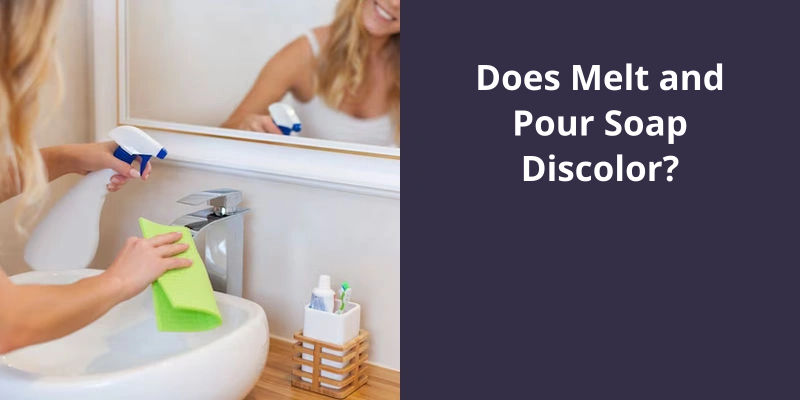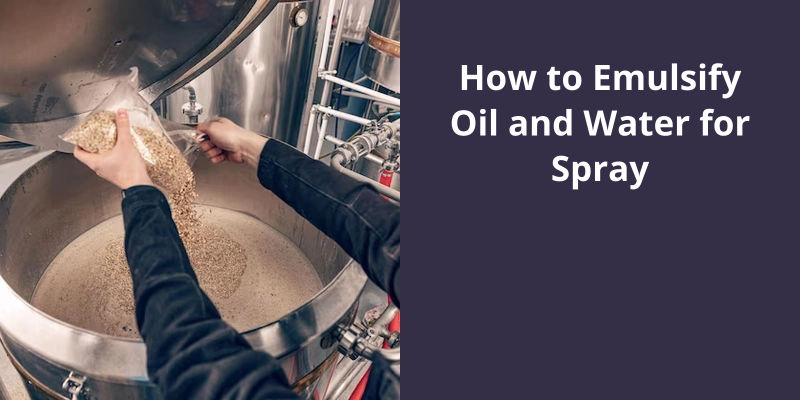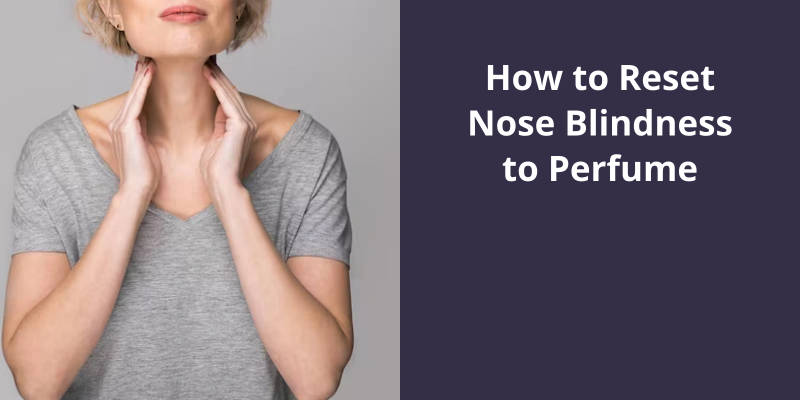Soap making is a fascinating craft that’s been a beloved pastime for centuries. From the traditional methods of lye and fat, to the more modern melt and pour techniques, soap making has evolved with time to include a variety of exciting ingredients, fragrances and colors. Yet, one question that never fails to pop up when talking about soap making is whether or not melt and pour soap discolors. As with most things, the answer isn’t so straightforward. While pure melt and pour soap bases won’t undergo any undesirable change in color on their own, additional ingredients added to the mix can potentially cause discoloration. Specifically, fragrances can play a significant role in soap discoloration, as they each have their own unique natural hue that can affect the final product. So, if you're wondering why your melt and pour soap doesn't look quite as vibrant as you'd hoped, keep reading to find out more about the various factors that contribute to it’s overall color.

How Do You Stop Soap From Discoloring?
Soap making is a popular hobby for many. It provides an outlet for creativity and allows individuals to make their own unique products. However, one issue that many soap makers face is discoloration. Over time, soap can turn brown or yellow, making it less visually appealing. There are several ways to prevent this from happening, including the use of Vanilla Color Stabilizer.
Vanilla Color Stabilizer is a popular additive used by soap makers to prevent discoloration. It’s particularly effective when making melt and pour soap. Melt and pour soap is a type of soap that’s pre-made and can be melted down and remolded into different shapes. While this type of soap is easy to work with, it’s also susceptible to discoloration.
The key to using Vanilla Color Stabilizer is to mix it with the fragrance oil you’re using. We recommend using a 1:1 ratio of stabilizer to fragrance. This ensures that the stabilizer is evenly distributed throughout the soap and will be effective in preventing discoloration.
Overuse of the stabilizer can lead to other issues, such as a change in the texture or consistency of the soap. It’s also important to note that some fragrances may not be compatible with the stabilizer, so be sure to do a small test batch before making a large batch.
When making melt and pour soap, it’s important to use a 1:1 ratio of stabilizer to fragrance and to follow the manufacturers instructions carefully. With these steps in mind, soap makers can enjoy their hobby without worrying about their soap changing color over time.
Other Methods to Prevent Soap Discoloration, Such as Using Titanium Dioxide or Adding Vitamin E to the Recipe.
- Using titanium dioxide can help prevent soap discoloration
- Adding Vitamin E to the recipe can also prevent soap discoloration
In order to achieve a desired color for soap, there are several techniques that can be utilized. Adding certain ingredients is one of the most popular methods, and for soap-makers looking for a white hue, the addition of Titanium Dioxide is a widely used solution. There are two ways to incorporate this compound into soap-making, depending on the type of product you’re using. Take a look at the following details to learn more.
What Ingredient Makes Soap White?
Another option to make your soap whiter is to use a mixture of oils that are naturally lighter in color. For example, using oils such as coconut, avocado, or sweet almond can help to create a lighter-colored soap. However, keep in mind that using too much of these oils can also affect the overall hardness of your soap and it’s lathering ability.
It’s important to note that the color of your soap can also be affected by other factors such as fragrance oils or essential oils. To avoid this, it’s recommended to use lighter-colored fragrance oils or essential oils.
However, it’s important to note that using too much of a water discount can also affect the overall texture and lathering ability of your soap.
A final factor to consider is the curing process. As your soap cures, it may naturally become lighter in color. This is due to the evaporation of water and the concentration of the soap over time. To ensure that your soap cures evenly and without discoloration, it’s important to store it in a cool, dry place and allow it enough time to cure before use.
Careful attention to these factors can help you create a high-quality soap that both looks and performs beautifully.
The Science Behind How Soap Is Made and the Role of Ingredients in It’s Production
Soap is produced through a chemical process called saponification, which involves the combination of a fat or oil with an alkali such as lye. This process results in the formation of soap and glycerin. The ingredients used in soap production, including fats, oils, and essential oils, are chosen for their cleansing and moisturizing properties, as well as their ability to provide aroma and color to the soap. The science behind how soap is made involves a delicate balance of these ingredients to ensure that the soap is effective, safe, and pleasant to use.
Source: Simple Old Fashioned Hard White Soap Recipes
While soap may seem like a simple and straightforward product, it’s important to understand the factors that can affect it’s appearance and effectiveness. In this regard, pH value is a critical consideration that can determine whether or not your soap turns brown over time. While this may seem like a minor issue, it can affect the overall quality and aesthetic of your soap, which is why it’s important to choose the right product for your needs.
What Causes Soap to Turn Brown?
Additionally, it’s important to consider the ingredients in the soap. Natural colorants such as herbs, spices, and essential oils can cause discoloration over time. This is especially true if the soap is exposed to sunlight or air. Synthetic colorants are less likely to cause discoloration but can still be affected by pH levels and exposure to light.
Another factor that can cause soap to turn brown is the presence of oils or fats that haven’t been fully saponified. This can happen if the soap isn’t properly mixed or if the recipe is imbalanced. The excess oils can oxidize and turn brown over time. Making sure to follow the recipe accurately and thoroughly mixing the ingredients can help prevent this issue.
The hardness of the water used to wash with the soap can also play a role in discoloration. Hard water contains high levels of minerals such as calcium and magnesium which can react with the soap, causing it to turn brown or develop a film. Using a water softener or distilled water can help minimize this issue.
By being aware of these factors and taking preventative measures, such as using a pH-neutral soap, following recipe instructions, using distilled water, and properly storing the soap, you can help maintain the color and quality of your soap.
How to Prevent Soap From Drying Out and Cracking, Which Can Also Affect It’s Color.
Soap can be prevented from becoming dry and cracked by keeping it away from direct sunlight, moisture, and excessive heat. Storing it in a cool, dry place, and wrapping it in plastic or paper can help preserve it’s moisture content. Additionally, using quality ingredients and avoiding over-mixing can help prevent cracking. To maintain it’s color, it’s important to also avoid exposing the soap to direct sunlight and store it in a colored container or wrap it in a colored paper.
While soap fragrance oils can add a pleasant scent to your soap, certain ingredients like Vanillin or Ethyl Vanillin may alter the color of your product. Discoloration often occurs over time as the soap cures and may lead to an unappealing appearance. In this article, we’ll explore whether ethyl vanillin is likely to cause this discoloration and how to avoid it.
Does Ethyl Vanillin Discolor Soap?
The question of whether ethyl vanillin discolors soap is a common one asked by soap makers and fragrance enthusiasts. The answer is yes, ethyl vanillin can darken or discolor soap over time. This is because ethyl vanillin is a powerful antioxidant that reacts with the oils and fats in soap to create a brown or yellow color.
Many soap fragrance oils contain vanillin or ethyl vanillin (vanilla extract) in their formulation to give the product a sweet and warm scent. While this is a popular ingredient, it can present challenges for soap makers who want to maintain the color of their soaps over time. If you’re looking to use ethyl vanillin in your soap recipe, it’s important to be aware of it’s discoloration tendency and how you can work around it.
These products contain ingredients that can help prevent the chemical reaction between the fragrance oil and the soap base that causes discoloration. Using a smaller amount will still provide a pleasant vanilla scent without compromising the color of the soap.
The discoloration is influenced by the oils and fats used in the soap, as well as the amount of ethyl vanillin used. If you’re using a high percentage of olive oil in your soap recipe, you may see less discoloration than if you were using a high percentage of coconut oil.
It’s important to experiment with different recipes and ingredients to find what works best for your soap making needs.
How to Prevent Ethyl Vanillin Discoloration in Soap
- Store ethyl vanillin in an airtight container.
- Avoid exposure to light and moisture.
- Use antioxidants like vitamin E or rosemary extract in your soap recipe.
- Add ethyl vanillin at lower temperatures to prevent overheating and discoloration.
- Use a recipe with a low pH level to prevent ethyl vanillin discoloration.
- Consider using vanilla stabilizers like sodium lactate or sodium citrate in your soap recipe.
It’s not uncommon for soap to take on a darker color after it’s been made. If you’ve noticed your soap turning black or looking funny, don’t worry – this is a normal part of the soapmaking process. Known as the gel phase, this occurs when the lye and oils react and cause the soap to heat up. Let’s explore this process further and understand what causes soap to turn black during gel phase.
Why Does Soap Turn Black?
During the gel phase, the soap appears transparent and translucent, which gives it a unique and alluring appearance. However, as the soap starts to cool down, it begins to solidify and turns opaque. This is when the soap starts to take on the color of the oils used in the recipe, and if it contains any additives or fragrances, it may also give off an altered shade.
Furthermore, some soapmakers may add charcoal or activated carbon to their soap, which can cause it to turn black. This ingredient is often used for it’s natural detoxifying properties, which makes it an ideal choice for deep-cleansing soaps. However, too much charcoal or carbon can make the soap overly drying and abrasive, so it’s essential to use it sparingly.
If the base oils used in soapmaking are of a low quality or are rancid, they can affect the final color and quality of the soap. Using fresh, high-quality oils is essential for producing pure and premium soaps that don’t turn dark or funky.
If the soap has a high pH level, it can cause the oils to oxidize, which can affect the color of the soap. Additionally, if the soap has been exposed to air or heat for too long, it can change the pH level and contribute to discoloration and an off-putting odor.
Molds made from silicone tend to produce soaps that are smoother and more translucent, while those made from plastic can yield soaps that are rough, opaque, and prone to discoloration. Ultimately, proper soapmaking techniques, quality ingredients, and careful attention to the pH level and molding used are essential for producing beautiful, long-lasting bars of soap that don’t turn black or look funky.
The Science Behind Soapmaking and How It Affects the Final Product’s Color.
- Soap making involves a chemical reaction between fats/oils and an alkali (typically sodium hydroxide).
- During the reaction, the fats/oils are broken down into their individual fatty acid components and the alkali ions combine with the fatty acid ions to form soap.
- The type of fats/oils used in soapmaking can affect the soap’s final color. For example, using olive oil will result in a greenish tint while using coconut oil will result in a white soap.
- The amount of alkali used in soapmaking can also affect the final color. Using too much alkali can result in a darker soap while using too little can result in a lighter soap.
- Certain additives such as natural colorants or mica powders can also be used to change the color of the soap.
Conclusion
Ultimately, it’s important to pay attention to the ingredients you’re adding to your melt and pour soap bases in order to achieve the desired color and appearance. By being mindful of the ingredients and fragrances used, soap makers can ensure their final product isn’t only visually appealing, but also safe and gentle for use on the skin. Remember, experimentation and exploration is all part of the fun when it comes to soap making, and with the vast array of ingredients and fragrances available, the creative possibilities are endless.





